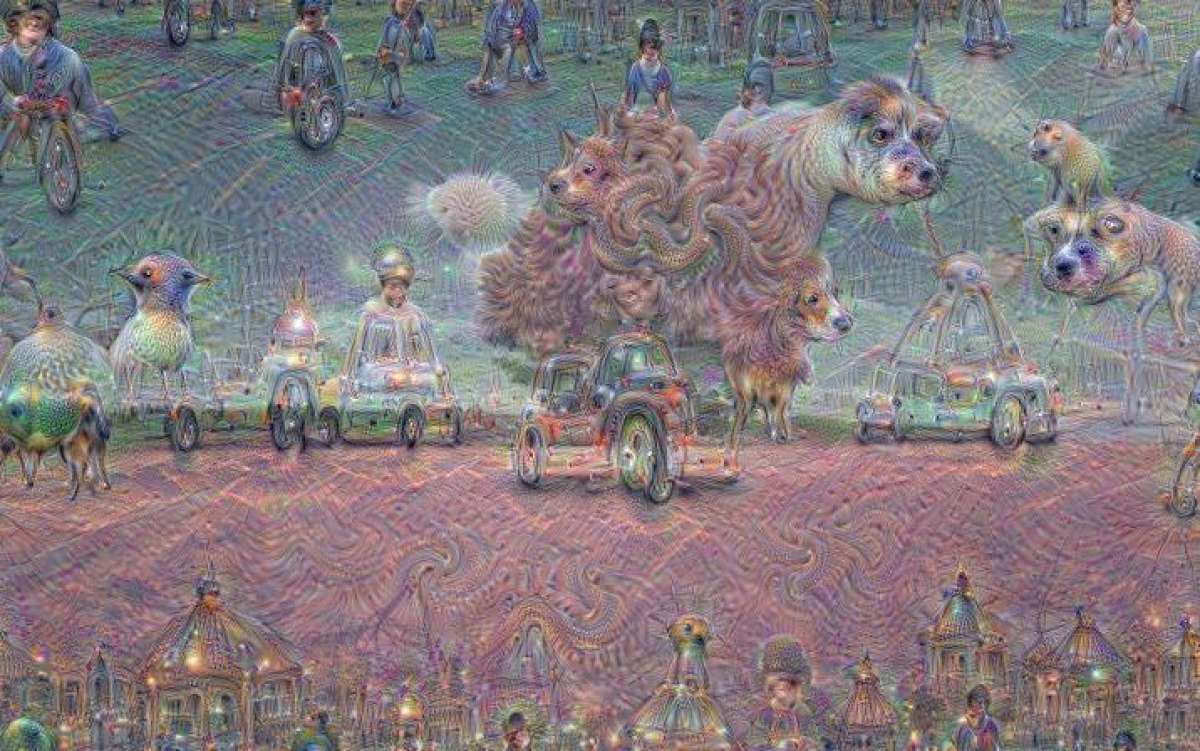If you thought you've had bad trips … wait till you see the nightmarish psycho-hallucinations of Google's artificial intelligence robots.
If you thought you've had bad trips … wait till you see the nightmarish psycho-hallucinations of Google's artificial intelligence robots.
Two weeks ago, Google engineers released the bizarre results of an A.I. experiment, in which they programmed a neural network code called "DeepDream" into robots.
They then showed the robots a series of photos, which they in turn interpreted and edited. The software would use code used to detect faces and other pattern, then edit the image to make it look more like that pattern in order to test whether their robots could differentiate various images from each other. For example … Robot, are you looking at a frying pan or a tennis racket?
Robot: kjfalkfjaldfjalfjaaaaaaa
You see, what happened instead was that the robots would morph the everyday photos into not into rational interpretations, but into psychedelic, abstract images ranging from beautiful to full-on grotesque. Many of the edited images featured animal eyes and faces, since that is what the software had been "trained" to recognize:



Although Google's DeepDream is really fucking crazy/sexy/cool, it can also get the company in trouble. Earlier this week, it was revealed that the software assigned black people the tag of "gorilla." We mean fuck, even robots are racist these days. Not cool, Google.
But aside from that stupid mishap, DeepDream's developers think the code could be used to expand the creative capabilities of artists and those who want to describe their ayhuaysca trip in words, but can't because now they only speak an indigenous Guatemalan shaman tongue.
"The techniques presented here help us understand and visualize how neural networks are able to carry out difficult classification tasks, improve network architecture, and check what the network has learned during training," engineers wrote at the time. "It also makes us wonder whether neural networks could become a tool for artists—a new way to remix visual concepts—or perhaps even shed a little light on the roots of the creative process in general."
Then, just a few days ago, a group of mapmakers caught wind of the DeepDream experiments and stepped in to produce some geo-visualizations of their own. And now, the hills literally have eyes.
They rendered a couple of England’s cities using OpenStreetMap data, then gave downtown Washington, D.C., the psychedelic robot treatment using Google Maps.
Look:




Ugh, that's trippier than if you tripped and fell while tripping, and so hard to read. What if real Google Maps were like this?
"Take a right at the pagoda with eyes, then continue straight for five bears on bikes with energy strings coming off them. You have arrived."



Leave a Reply